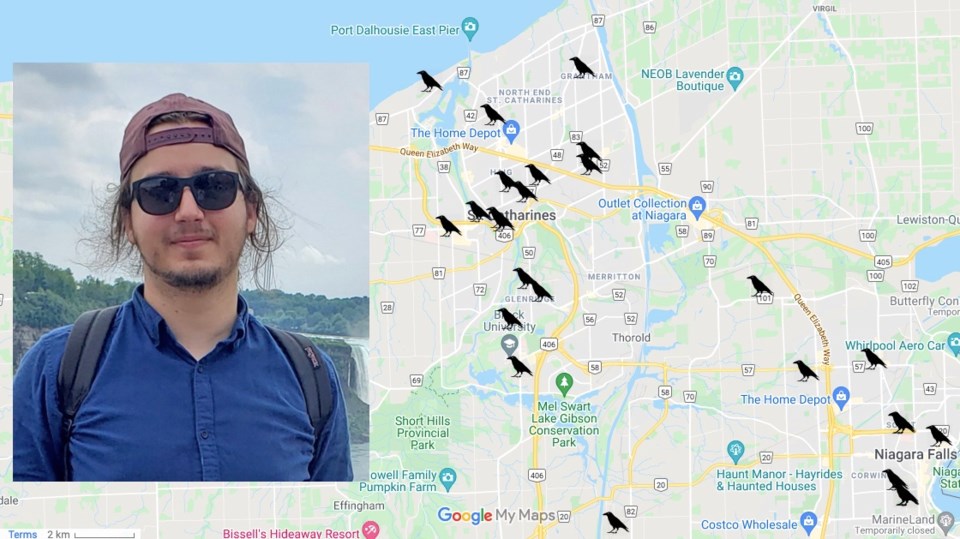What goes on inside the mind of a crow? That’s what a first-year Master's student in biological sciences at Brock University is trying to find out—and he’s asking the people of Thorold to help him.
“I want to try and find the most popular crow locations in the Niagara region,” says Alex Popescu, while showing off his crow-spotting map to ThoroldToday. “Crows tend to be relatively territorial, they stay in their own spots, they’re very habitual. By creating this map I’m asking anyone wanting to help to find where these locations are.”
On Popescu’s map, people can log any crow sightings in the Niagara Region, adding any details or pictures they can provide. Through this process, Popescu hopes to locate the most frequented spots by crows so he will be able to study their behaviour for his thesis project.
“I’ll be looking at sentinel behaviour,” he says. “While other crows forage, usually there might be one crow up in a conspicuous spot, usually in a tree or perched on a roof somewhere. It’s going to be vigilant for predators and when it ever does spot something threatening it’s going to call out to crows and they’re going to flee from the area. My objective is to compare this type of social behaviour in less urban areas compared to more urban areas.”
Growing up around birds, Popescu has always been fascinated by their behaviour.
“When I was a kid we used to raise chickens, we had budgies, we saved birds,” he says. “And I’ve noticed weird behaviours in chickens, for example. Our chickens, for maybe the last fifty generations they were farm chickens, they never saw the outside world. But weirdly enough, a day or two after being let loose in our backyard they would know when it’s dangerous to go out in the open. I’ve always thought about it. They haven’t seen any bird of prey, they don’t know what it is, but somehow it’s still instinctive to fear the shadow and sky. That curiosity towards behaviour really pushed me into biology.”
So now he’s trying to understand crows.
“I read Edgar Allan Poe, the myths around crows, the folklore around crows, that got me looking into the crazy behaviour of crows,” says Popescu. “They’ve always been a little bit misunderstood. For 100 years, people kept looking at crows as signs of morbidity or death. But nowadays more and more we are realizing that crows can actually be markers for the health of ecosystems, so they can be really useful.”
With his project, Popescu hopes to bring people and crows closer together.
“I think that stigmatization of crows is going to be chipped away over time,” he says. “I think we’re really going to appreciate how awesome these birds are, how crazy intelligent and social and adaptable—I can’t put it into words, but if there was a way for me to try and convey this, it would be through getting people to look out for crows, getting people to interact with them.”



